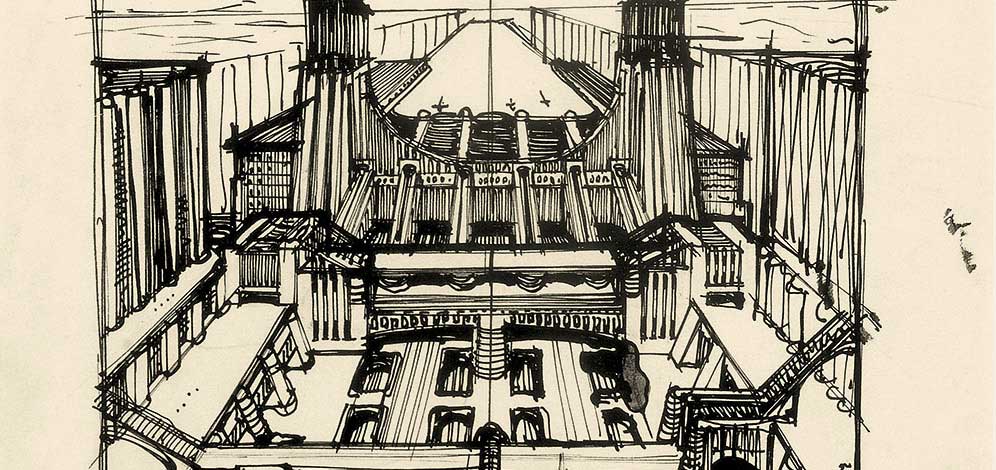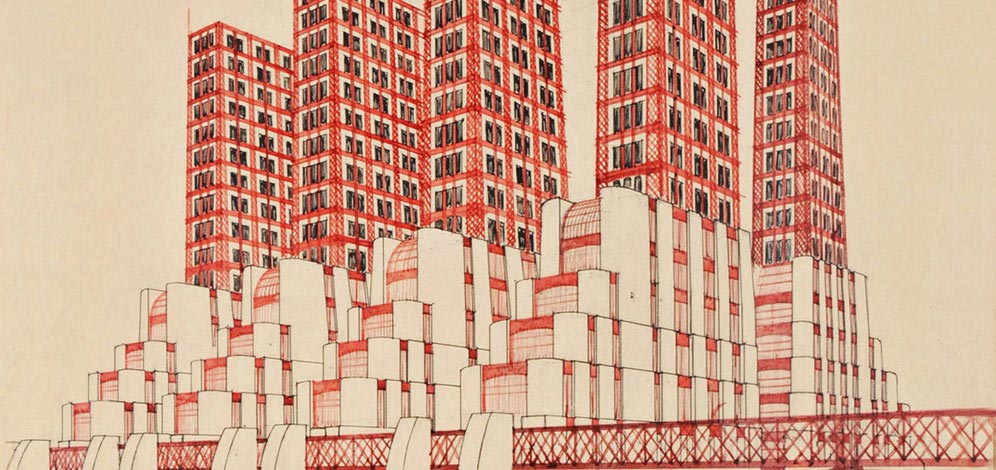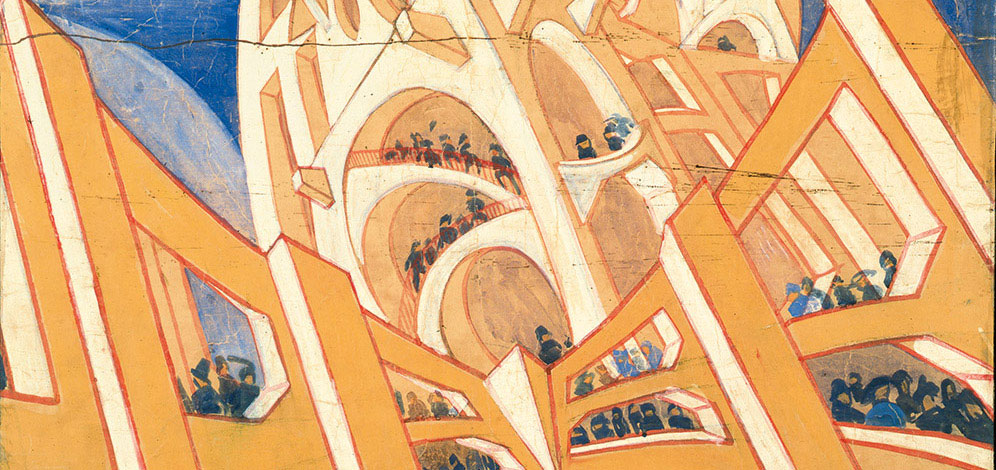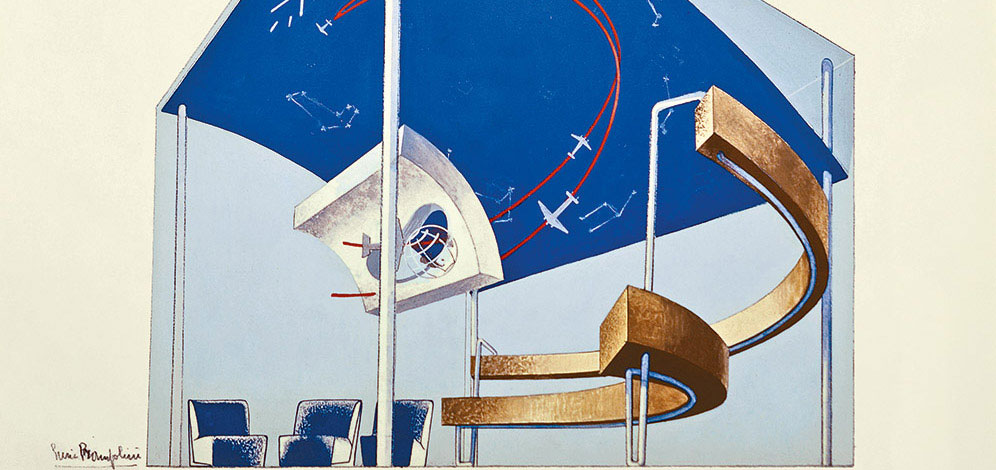The Futurists celebrated the modern city. Rejecting historicism and seeking to revolutionize urban life, architects Mario Chiattone and Antonio Sant’Elia proposed utopian visions for cities of the future in two series of drawings: Buildings for a Modern Metropolis and Città Nuova (both 1914). Embracing new materials and industrial methods that would alleviate the need for internal load-bearing systems, these designs feature soaring, narrow structures outfitted with thin, lightweight facades. External elevators and viaducts shoot up the spare, windowless planes. The Futurist emphasis on speed is accommodated by unimpeded transportation systems, including facilities for both air and rail travel (see Sant’Elia’s Station for Trains and Airplanes and Tullio Crali’s later plan for a similar center). While Chiattone never defined himself as a Futurist, Sant’Elia outlined the goals of this style in a text that was subsequently edited by Marinetti and issued as “Futurist Architecture: Manifesto” (1914). These early forays into architecture stressed rhetoric rather than execution and pictorial imaginings took precedence over the specifics of implementation. Sant’Elia died in World War I in 1916 and Chiattone moved in another direction, and their Futurist designs were never built.
By the 1930s, the Fascist state was erecting new public buildings in the clean, spare parlance of Rationalism or the Stile Littorio (which references classical Roman architecture). Neither the complex modern metropolis envisioned by architects such as Chiattone and Sant’Elia nor the theatrical urban buildings dreamed up by Virgilio Marchi were realized. Their successor, Alberto Sartoris (a dedicated Fascist), also built few of his designs, and he vacillated between Futurism and Rationalism, exhibiting the same plans under both banners. While he aligned himself with Futurism conceptually, he leaned toward functionalist aesthetics. Sartoris’s axonometric projections eschew superfluous forms in favor of structures that alternate massed volumes with empty space. Crali, better known as a visual artist, also imagined modern envelopes for practical structures, as in his multipurpose Sea Air Rail Terminal. Among the few Futurist structures to be built were temporary ones for fairs, such as those conceived by the multifaceted artist Enrico Prampolini.
Please note that Annex Levels 5 and 7 (see Museum Map), which contain Benedetta's murals and major works by Giacomo Balla and Fortunato Depero, close August 20.










